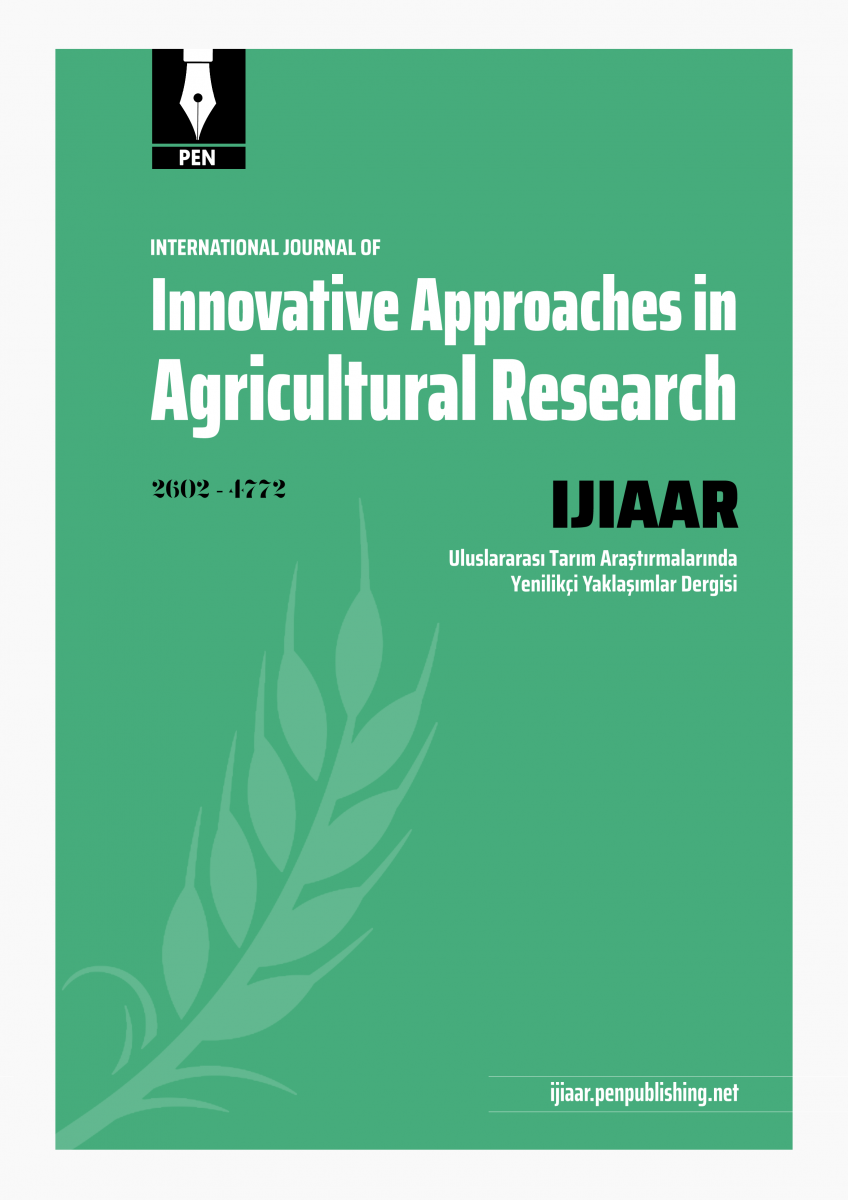- Arbi, M.A.A. & FayeB. (2019). Genetic improvement in dromedary camels: challenges and opportunities. Frontiers in Genetics, 10:167. [Google Scholar]
- Alary, V., Amsidder, L., Araba, A., Capote, C.B., Bedhiaf-Romdhani, S., Ben Salem, W., Boujenane, I., Elena,C., Letaif,N., Faye,B., Gaouar,S.B.S., Pastrana, C.I., Baena, S.N.&Amine, L. (2021). Social network analysis of the stakeholders involved in the dromadery sector in the mediterranean region. Sustainability, 13(21), 12127. [Google Scholar]
- Alemnesh, Y., Mitiku,E. & Kibebew, B. (2020). Current Status of Camel Dairy Processing and Technologies: A Review. Open Journal of Animal Sciences, 10:362-377. [Google Scholar]
- Babege, K., Wandara, S. & Latamo, L. (2021). Potentional of camel production and management in Ethiopia: Review. Journal of Dryland Agriculture, 7(5), 67-76. [Google Scholar]
- Brahimi, Z., Senoussi, A. & Faye, B. (2020). Camel meat marketing and camel meat marketplace in the Algerian northen Sahara-case of the region of Souf. Emirates Journal of food and Agriculture, 32(4): 319-327. [Google Scholar]
- Brahimi, Z. & Senoussi, A. (2020). Contribution to the study of camel meat consumption and highlightning a typology of camel meat consumer in Souf Region-Algerian Northern Sahara. Algerian Journal of Arid environment, 9(1), 77-87. [Google Scholar]
- Biesalski, H. (2005). Meat as a component of a healthy diet – Are there any risks or benefits if meat is avoided in the diet? Meat Sciences, 70:509–524. [Google Scholar]
- Burger, P.A., Ciani,E.& Faye,B.(2019). Old world camels in a modern world – a balancing act between conservation and genetic improvement. Animal Genetics, 50, 598-612. [Google Scholar]
- Bougherara, H., Dib, A.L., Boukhechem, S., Bouaziz,A., Kadja,L., Ghougal,K., Oubira,I., Chari,Z., Kerrour,N.S., Lamri,M., Lakhdara, N. & Bererhi, E.(2023). Valorization of Camel Meat and Meat Products in the World and in Algeria. Biology and Life Sciences Forum, 22, 11. [Google Scholar]
- Chniter, M., Hammadi, M., Khorchani, T., Krit, R., Benwahada A.&Hamoud, M.B. (2013). Classification of Maghrebi camels (Camelus dromedarius) according to their tribal affiliation and body traits in southern Tunisia. Emirates Journalof Food and Agriculture, 25: 625–34. [Google Scholar]
- FAO. (2013). Caractérisation génétique des ressources génétiques animales. Directives FAO sur la production et la santé animale, N°11, Rome, p151. [Google Scholar]
- FAOSTAT. (2020). Données sur les productions mondiales de lait et deviande pour les différentes espèces d’élevage. Rome: FAO. Available at : www.fao.org/faostat/fr/#data. [Google Scholar]
- Faye, B., Abdelhedi, O., Raiymbek, G., Kadim, I.& Hocquette, J.F. (2013). La production de viande de chameau : état des connaissances, situation actuelle et perspective. INRA Productions Animales, 26(3), 289-300. [Google Scholar]
- Faye, B., Jaouad, J., Bhrawi, K., Senoussi, A.& Bengoumi, M. (2014). Elevage camelin en Afrique du Nord: Etat des lieux et perspectives. Revued’Elevage et de Médecine Vétérinaire des Pays Tropicaux, 67, 213–221. [Google Scholar]
- Hussein, A., Aujla, K.M.& Hassan, S. (2013). Production and marketing of camel products in semi-desert and desert area of Pakistan. Pakistan Journal of Agricultural Research, 26(2): 130-142. [Google Scholar]
- INS. (2023). Institut National de la métérologie. Available at: www.meteo.tn [Google Scholar]
- Jaouad, M. (2009). Economic importance, potentials and performance of Tunisian meat sector: red meat supply response and its determinants. New Medit, 2, 31-36. [Google Scholar]
- Jemli, M.H., Boulajfene, H. Azaouzi, Z., Ben SalemW., & Khaldi, S. (2018). Camel breeding development project in Tunisia. Revue Marocaine des Sciences Agronomiques et Vétérinaires, 6(2), 256-259. [Google Scholar]
- Kadim, I.T., Al-Amri, I.S., Alkindi, A.Y.& Haq, Q.M.I. (2022). Nutritional values and health benefits of dromedary camel meat. Animal Frontiers, 12(4), 61-70. [Google Scholar]
- Kadim, I.T. & Sahi, A.B.A. (2018). Health aspects of camel meat: a review of literature. Advances in Animal and Veterinary Sciences, 6(7): 271–272. [Google Scholar]
- Kadim I.T., Mahgoub, O. & Al-Marzooqi, W. (2008). Meat quality and composition of longissimus thoracis from Arabian camel (Camelud dromedarios) and Omani beef: A comparative study. Journal of Camelid Science, 1(1):37-47. [Google Scholar]
- Kammoun, M. (2011). Détermination des parameters productifs des camélidés engraissés en Tunisie. Projet Renforcement des services d’appui à l’agriculture, ESAM, p73. [Google Scholar]
- Kena, D. (2022). Review on camel production and marketing status in Ethiopia. Pastoralism,12 : 38. [Google Scholar]
- Letaief, S. Bedhiaf-Romdhani, S. (2022). Camel herd management under pastoral system in southern of Tunisia. Options Méditerranéennes, série A. Séminaires méditerranéens, 129, 57-62. [Google Scholar]
- Letayef, N. (2018). Caractérisation des chaînes de valeur des produits camelins dans le sud tunisien. Mémoire de mastère en biotechnologie animale, Institut National Agronomique de Tunisie. [Google Scholar]
- Mohamed Ali, T. (2016). Analysis of the redmeat sector in Tunisia camel meat. INAT Economics Agricultural and Agrifood Manangement. Available from : https://www.memoireonline.com/04/16/9480:Analyse-de-la-filière-viande-rouge-en-tunisie-viande-cameline.html. [Google Scholar]
- Moslah M., M. Hammadi and T. Khorchani. 2004. Productivité de l’élevage camelin dans les parcours du sud tunisien. Options Méditérannéennes, 62 : 343-347. [Google Scholar]
- Moslam, M & Megdich, F. (1989). L’élevage camelin en Tunisie. Options Méditéranéennes, série seminaries, 2 : 33-36. [Google Scholar]
- Neven, D. (2014). Developing sustainable food value chains: Guiding principles. Food and Agriculture Organisation of the United Nation [FAO], Rome. [Google Scholar]
- Ould Ahmed, M., Ben Salem,F., Bedhiaf, S. & Djemali, M.(2009). Camel genetic [Google Scholar]
- resources in Tunisia. The Second Conference of the International Society [Google Scholar]
- of Camelid Research & Development, 12-14 March, Djerba, Tunisia, 2009. [Google Scholar]
- Ould Ahmed, M., Ben Salem,F., Bedhiaf,S., Rekik, B.& Djemali, M.(2010). Genetic diversity in Tunisian dromadery (Camelus dromedarius) populations using microsatellite markers. Livestock Sciences, 132, 182-185. [Google Scholar]
- Ramadan, S. & Inoue-Murayama, M. (2017). Advances in camel genomics and their applications: A review. The Journal of Animal Genetics, 45:49-58. [Google Scholar]
- Salmi, C., Jaouad, M., Faye, B. & Rjili., H. (2017). Situation of the camel meat sector in the south-eastern Tunisia: case of the governorate of Medenin. Journal of New Sciences, n.spéc. Conférence CSIEA, 7: 2648-2653. Conférence Scientifique Internationale sur l'Environnement et l'Agriculture, Hammamet, Tunisie, 24-25 Avril 2017. [Google Scholar]
- Salmi, C., Jaouad, M., Faye, B., & Haouat, F.(2018). Typologie des éleveurs camelin au sud-est tunisien en vue de leurs performances économiques. Revue des Régions Arides, n° 44, numéro spécial. Actes du colloque international « Développement socio-économique et dynamique des sociètés rurales : Pluralité d’acteurs, gestion des ressources et développement territorial », Zarzis, 3, 4 et 5 mais 2016. [Google Scholar]
- Salmi, C., Jaouad, M., Faye, B. & Khorchani, T. (2015). Socio-economics indicators of the camel production sector in southeast Tunisia: main households survey results. Veterinariâ, 42(2), 4th Conference of the International Society of Camelid Research and Development, 8th to 12th June, Almaty, Kazakhstan. [Google Scholar]
- Tardif, N., Jaouad, M., Khorchani T., & Faye, B. (2014). Contribution of camel breeding to the household economy in southeast Tunisia. In: Baumont R. (ed.), Carrère P. (ed.), Jouven M. (ed.), Lombardi G. (ed.), López-Francos A. (ed.), Martin B. (ed.), Peeters A. (ed.), Porqueddu C. (ed.). Forage resources and ecosystem services provided by Mountain and Mediterranean grasslands and rangelands. Zaragoza: CIHEAM / INRA / FAO / VetAgro Sup Clermont-Ferrand / Montpellier SupAgro, pp. 745-749. (Options Méditerranéennes: Série A. Séminaires Méditerranéens; n. 109). Joint Meeting of the "Mountain Pastures, Mediterranean Forage Resources (FAO/ESCORENA-CIHEAM) and Mountain Cheese" Network, 2014/06/24-26, Clermont-Ferrand (France). [Google Scholar]
- Zeng, B., & McGregor, M.(2008). Review of commercial options for management of feral camels. In: ‘Managing the impacts of feral camels in Australia: a new way of doing business’. DKCRC Report 47. (Eds G. P. Edwards, B. Zeng, W. K. Saalfeld, P. Vaarzon-Morel and M. McGregor.) pp. 221–282. (Desert Knowledge Cooperative Research Centre: Alice Springs.) Available from: www.desertknowledgecrc.com.au/publications/contractresearch.html [Google Scholar]
|

